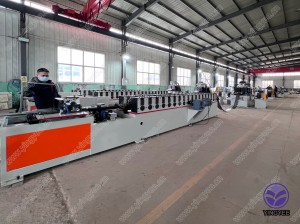
The Evolution and Importance of Square Steel Pipe Making Machines
Square steel pipes, known for their durability and versatility, have become essential components in various industries, including construction, automotive, and manufacturing. At the heart of their production are square steel pipe-making machines, sophisticated equipment designed to streamline the manufacturing process and enhance efficiency. This article delves into the evolution, functionality, and significance of these machines in today's industrial landscape.
Historical Context
The journey of steel pipe manufacturing began with the introduction of robust materials in the early 19th century. Initially, pipe production was a labor-intensive process, heavily reliant on manual labor and rudimentary tools. With the industrial revolution, advancements in technology led to the development of machinery that significantly improved the production speed and quality of steel pipes.
The introduction of welding and forming technologies marked a turning point. In the mid-20th century, square steel pipe-making machines emerged, providing a method to produce square and rectangular hollow sections with remarkable efficiency. These machines revolutionized the industry by allowing for larger volumes of production while maintaining high standards of quality.
The Machinery
Square steel pipe-making machines comprise various components that work in synergy to transform raw steel into finished products. The primary stages of the manufacturing process include
1. Material Preparation The process begins with the selection of high-quality steel coils. These coils are cut into specific widths based on the desired dimensions of the final product.
2. Forming The cut strips are fed into a forming machine where they are shaped into a square or rectangular profile. This process involves bending the edges of the steel strip until they meet at corners, facilitated by rollers and dies.

3. Welding Following the forming stage, the edges of the steel strip are welded together. This can be achieved through various methods, including high-frequency electric resistance welding. This step is critical as it ensures the structural integrity of the pipe.
4. Sizing After welding, the pipes undergo sizing where they are passed through a series of rollers to achieve the final dimensions. This ensures that each pipe meets the specified tolerances and standards.
5. Finishing The last step in the manufacturing process involves surface treatment, which may include galvanizing, painting, or polishing. This not only enhances the aesthetic appeal of the pipes but also provides protection against corrosion.
Importance in Various Industries
Square steel pipes produced by these machines serve multiple purposes across diverse sectors. In construction, they are used for structural applications, supporting frameworks for buildings, bridges, and various infrastructure projects. Their strength, combined with the ability to withstand high loads, makes them suitable for critical applications.
In the automotive industry, square steel pipes are utilized to create durable frames and supports for vehicles, contributing to enhanced safety and performance. Additionally, in manufacturing, they are essential for creating machinery components and equipment, highlighting their versatility.
The demand for square steel pipes continues to grow globally, driven by urbanization and infrastructural development. Consequently, manufacturers are increasingly investing in advanced square steel pipe-making machines that incorporate automation and smart technologies, enhancing productivity and reducing operational costs.
Conclusion
The square steel pipe-making machine has undoubtedly transformed the steel manufacturing landscape. By combining technological innovation with efficient processes, these machines play a vital role in supplying the necessary materials for a myriad of applications across industries. As the world continues to advance, the evolution of these machines will likely keep pace, ensuring that the production of square steel pipes remains efficient and meets the ever-growing demands of modern infrastructure and construction. The future of square steel pipe manufacturing is bright, driven by continuous innovation and a commitment to quality.